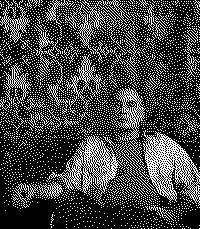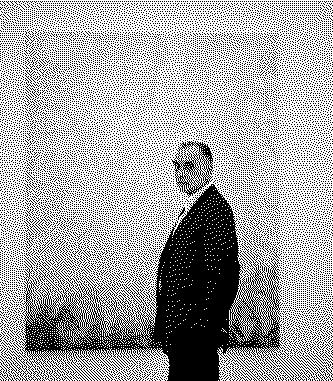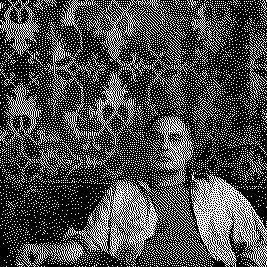Artists/Rudolf Stingel
Fast Facts
Innovative Use of Materials
Rudolf Stingel's art is renowned for its innovative use of materials, including insulation panels, carpeting, and aluminum foil, to challenge traditional painting surfaces and expand the boundaries of the medium. His explorations into materiality invite viewers to reconsider the essence and construction of a painting.
Interactive Installations
Stingel transforms gallery spaces into immersive environments, notably with his carpet installations that cover floors and walls. These interactive works blur the lines between the artwork and the viewer, inviting participation and altering perceptions of space and art's role within it.
Photorealistic and Abstract Duality
His oeuvre spans from photorealistic paintings, often derived from photographs, to abstract works that emphasize texture and surface. This duality showcases Stingel's versatility and his deep engagement with painting's various expressions and potentials.
Instructional Art
Stingel has also ventured into conceptual art by publishing an instructional manual on creating a Stingel painting. This act democratizes art-making and questions notions of authorship, originality, and the value of art in a unique and direct way.
Reflection and Memory
Many of Stingel's works, especially his photorealistic paintings, evoke themes of reflection and memory, exploring the passage of time and the subjective nature of recollection. Through these themes, his art connects on a personal level with viewers, inviting introspection and engagement with past experiences.
Textural Experimentation
Stingel's abstract works often feature rich textures that he achieves through various techniques, including the use of cast polyurethane and other materials to create complex, tactile surfaces. This focus on texture enhances the sensory experience of his art, emphasizing the physical act of painting and the materiality of the artwork itself.
Dialogue with Art History
Throughout his career, Stingel has engaged in a dialogue with the history of art, challenging and reinterpreting traditional concepts and practices. His work reflects a deep understanding of art's historical contexts, while simultaneously pushing its boundaries to explore new possibilities and meanings.
Biography



Rudolf Stingel, born in 1956 in Merano, Italy, is a conceptual artist renowned for his innovative approach to art, which challenges traditional notions of painting and installations. Stingel's work often engages the audience in dialogue about their perception of art, exploring the process of creation through conceptual painting and installations.
Utilizing readily available materials such as styrofoam, carpet, and cast polyurethane, he delves into the underlying concepts of art creation and viewer interaction.
Since 2005, Stingel has focused on painting photorealistic portraits of himself and others, capturing intricate details and the essence of human emotion and landscapes. His series of self-portraits, notably "Untitled (After Sam)" (2005–06), based on photographs by American photographer Sam Samore, mark a significant phase in his career, showcasing Stingel's ability to merge photorealism with conceptual art practices (Gagosian).
Stingel's work has been exhibited at major art venues worldwide, reflecting his status as a significant figure in contemporary art. His participation in the Venice Biennales in 1999 and 2003, and a mid-career retrospective organized by the Museum of Contemporary Art, Chicago, and the Whitney Museum of American Art, New York, in 2007, highlight his influence and recognition in the art world. This retrospective featured an aluminum-faced installation and invited the public to interact by scratching messages and images into the soft walls, exemplifying Stingel's interest in audience engagement and the ephemeral nature of art (Wikipedia).
His art has also achieved remarkable success in the market, with his prices skyrocketing following his 2007 show at the Whitney Museum. Notably, one of his Styrofoam boards fetched $1.9 million at auction, and his work "Untitled (for Sam)" set an auction high for the artist at $10,551,500 at Christie's Post-War and Contemporary Art Evening Sale in 2017 (Wikipedia).
In 2008, Stingel received second place for Best Monographic Museum Show Nationally by the U.S. Art Critics Association for the 2006–07 season, underscoring his critical acclaim and the impactful nature of his exhibitions (Wikipedia).
Through his explorations of materiality, process, and the viewer's role in art, Rudolf Stingel continues to expand the boundaries of contemporary art, making significant contributions to the discourse on art and its place in society.
Importance
Rudolf Stingel's importance in the contemporary art world is multifaceted, reflecting his innovative approach to artmaking, his exploration of the nature of memory and perception, and his influence on the dialogue surrounding the conceptual and material boundaries of painting.
Reimagining Painting and Installation Art
Stingel challenges traditional notions of painting and installations, employing materials such as rubber, carpet, painted aluminum, Styrofoam, and paint to disrupt and expand the viewer's understanding of art objects. His work continually engages with fundamental questions concerning authenticity, hierarchy, meaning, and context, thus broadening the scope of what constitutes painting today (Whitney Museum of American Art).
Photorealism and Conceptual Exploration
Since 2005, Stingel has engaged in creating photorealistic portraits and landscapes, such as his series based on vintage photographs of his birthplace in the Tyrolean Alps. These works, characterized by their meticulous detail and emotional depth, examine the intersection of memory, photography, and painting. They showcase Stingel's ability to invoke the emotional quality that was filtered out of artistic gesture during the latter half of the 20th century, reinvigorating Romanticism for the post-modern and post-photographic age (Sothebys.com).
Immersive Site-specific Exhibitions
Stingel's exhibitions transform galleries and museums into total works of art. For instance, his exhibition at the Neue Nationalgalerie in Berlin and at Palazzo Grassi featured immersive environments that enveloped visitors in a world created by Stingel. These exhibitions not only display his versatility across different mediums but also his capacity to create a subdued, all-encompassing environment that engages viewers in a direct and profound way (Gagosian).
Influence and Recognition
Stingel's participation in significant exhibitions, such as the Venice Biennales and solo museum shows in the United States, underscores his standing in the art world. Notably, his mid-career retrospective organized by the Museum of Contemporary Art, Chicago, and the Whitney Museum of American Art in New York highlighted his innovative contributions to contemporary art. Furthermore, the considerable success of his work in the art market, with record-breaking auction sales, signifies the high regard in which his work is held by collectors and the broader art community (Wikipedia).
Expanding Definitions of Art and Authorship
Through his series of works, Stingel continues to build upon and depart from one another, pushing the boundaries of art and authorship. His approach questions preconceived notions of painting, employing a variety of techniques and materials to explore themes of memory, time, and the nature of artistic creation itself (Gagosian).
Technique
Rudolf Stingel employs a variety of innovative techniques across his artistic practice, reflecting his conceptual approach to art. He explores the process of creation, perception, and the interaction between the artwork and its audience through diverse mediums and methods.
Photographic Portraiture and Photorealism
Stingel has created a series of paintings based on photographic portraits taken by other photographers, as well as black-and-white self-portraits based on photographs taken by Sam Samore. These works are notable for their photorealistic accuracy and are executed in a gray-scale palette to closely match the original black and white photographs. Stingel's engagement with photography extends to large-scale landscape paintings based on vintage photographs of his birthplace, capturing detailed textures and the effects of wear and age on the photographs themselves (Wikipedia).
Installation and Immersive Environments
Stingel's site-specific exhibitions transform galleries and museums into immersive environments. He has utilized materials like carpets printed with specific patterns, such as images of an Agra rug or Oriental rugs, and adorned spaces with both abstract and photorealistic paintings. These installations create all-encompassing environments that engage visitors on multiple sensory levels (Gagosian).
Use of Diverse Materials
Throughout his career, Stingel has utilized a wide range of materials, including rubber, carpet, painted aluminum, Styrofoam, and paint. His work often questions traditional understandings of painting, expanding the medium into three-dimensional space and incorporating unconventional materials into his installations (Whitney Museum of American Art).
Process-based Painting and the Passage of Time
Stingel's works, particularly his photorealistic paintings, often serve as meditations on memory, nostalgia, and the passage of time. For example, he has painted the granular surface of an old gelatin silver print, including its deterioration and creases, to create deeply emotive expressions that recover the emotional quality lost in modern art. These pieces not only represent physical objects but also invoke human presence through their absence, serving as indices for the passage of time (Sothebys.com).












